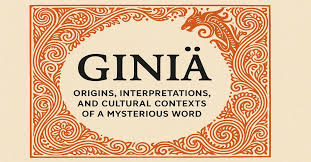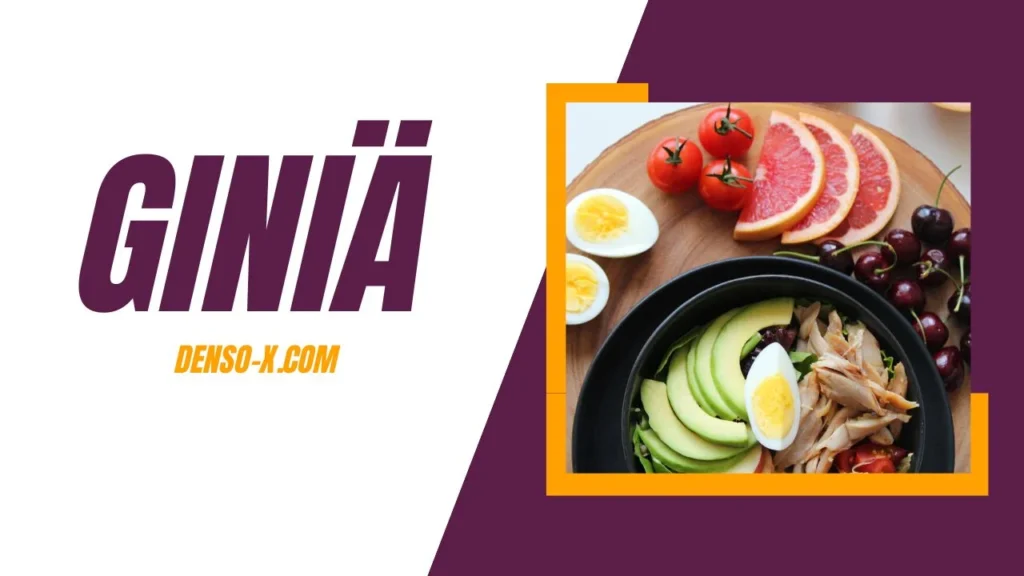
[ad_1]
In today’s rapidly interconnected society, the balance between preserving cultural heritage and embracing modernization is a prominent challenge faced by many communities. One such instance is presented by Giniä, a term that embodies the harmonious fusion of traditional practices and modern innovation. This article delves deep into the essence of Giniä, exploring its historical significance, contemporary applications, and potential future in our globalized world.
1. Understanding Giniä: Definition and Historical Context
1.1 What Is Giniä?
Giniä is a concept that refers to the integration of traditional cultural practices with modern lifestyles and technologies. It encompasses various domains, including art, cuisine, language, and social norms, promoting a respectful coexistence where neither tradition nor modernity overshadows the other.
1.2 Historical Background
To appreciate Giniä, it is pivotal to understand its roots. Many cultures have faced the onslaught of globalization, which often threatens indigenous traditions. However, throughout history, these cultures have found ways to adapt, preserving their identities while assimilating new influences. Giniä stands at this crossroads, signifying the resilience and creativity inherent in human nature.
2. The Components of Giniä
2.1 Cultural Practices
2.1.1 Art and Craftsmanship
Traditional art forms, such as pottery, weaving, and painting, often struggle to survive in modern times. Giniä emphasizes these crafts’ revival and innovation, turning them into marketable commodities while maintaining their essence.
2.1.2 Cuisine

Food is a prime example of Giniä in action. Traditional recipes integrate with contemporary culinary techniques, resulting in innovative dishes that respect historical significance. Culinary fusion reflects local identities while appealing to global palates.
2.2 Language and Communication
Language is a vital aspect of cultural identity. Giniä promotes the preservation of indigenous languages while adapting to newer communication mediums, such as social media. This dynamic relationship fosters both linguistic diversity and global connectivity.
2.3 Social Values and Norms
Communities wrestling with changing social norms find grounding in Giniä, which encourages the adaptation of traditional values to fit modern contexts. This balancing act can lead to greater inclusivity and resilience.
3. Giniä in Practice: Case Studies

3.1 The Revival of Traditional Arts
3.1.1 The Textiles of South Asia
In South Asia, traditional textile weaving incorporates modern design sensibilities, producing garments that resonate with contemporary fashion trends while honoring ancestral weaving techniques.
3.1.2 Indigenous Craft in the Americas
Indigenous artisans in North and South America have infused traditional craftsmanship with modern materials and aesthetics, appealing to a global audience while preserving their cultural narratives.
3.2 Culinary Innovations
3.2.1 The Global Influences on Ethnic Cuisine
Chefs around the globe are infusing traditional ethnic food with local ingredients and modern cooking methods. This evolution exemplifies Giniä, where classic dishes are reimagined for contemporary tastes.
3.2.2 Farm-to-Table Movements
The farm-to-table movement, rooted in traditional farming practices, embraces sustainable modern agricultural techniques. This blend promotes health and wellness, demonstrating the relevance of Giniä in contemporary society.
3.3 Language Revitalization
3.3.1 Digital Platforms for Indigenous Languages
Various digital platforms are emerging to promote indigenous languages, allowing for a revival of linguistic traditions while catering to the youth’s digital engagement.
3.3.2 Social Media as a Tool for Cultural Exchange
Social media serves as a bridge between cultures, facilitating exchanges that reinforce traditional values and contemporary ideas. The rise of influencers promoting traditional practices exemplifies this Giniä phenomenon.
4. Challenges Facing Giniä
4.1 Cultural Appropriation vs. Appreciation
The line between cultural appropriation and appreciation is often blurred. The Giniä approach encourages a respectful engagement with cultural elements while advocating for their rightful context, thus eschewing exploitation.
4.2 Economic Pressures
Globalization often imposes economic challenges that threaten traditional practices. Communities must innovate within financial constraints, which can sometimes lead to the dilution of cultural significance.
4.3 The Risk of Homogenization
As cultures intermingle, there’s a risk of homogenization, where unique identities might be overshadowed. Giniä serves as a reminder to honor distinct cultural expressions while promoting unity.
5. The Future of Giniä in a Globalized World
5.1 The Role of Technology
Technological advancements can serve as a double-edged sword. On one hand, they threaten traditional practices; on the other, they provide platforms for their promotion and preservation. The Giniä model advocates leveraging technology to showcase and maintain cultural heritage.
5.2 Education and Community Engagement
Education plays a crucial role in the Giniä movement. Schools and community programs that emphasize cultural education promote understanding and respect for traditional practices, equipping new generations to carry these traditions forward.
5.3 Sustainable Development
Sustainable practices rooted in traditional wisdom often yield environmentally friendly solutions for modern challenges. Giniä embodies the integration of eco-conscious practices with historical insights, paving the way for a more sustainable future.
6. Conclusion
Giniä embodies a progressive approach to preserving cultural heritage while embracing modernization. As the world becomes increasingly interconnected, the significance of finding common ground between tradition and modernity is paramount. Giniä not only celebrates diversity but also fosters resilience, creativity, and mutual respect. In our globalized world, it is imperative to advocate for a balanced coexistence of both elements, ensuring the survival of our rich cultural tapestries.
FAQs
What does Giniä mean?
Giniä refers to the integration of traditional cultural practices with modern lifestyles, emphasizing a respectful coexistence of both.
How can communities promote Giniä?
Communities can promote Giniä by organizing cultural workshops, utilizing technology for preservation, and encouraging artistic collaboration.
Is Giniä applicable to all cultures?
Yes, Giniä can be applied across various cultures, allowing them to adapt and thrive amidst globalization while preserving their unique identities.
What role does education play in Giniä?
Education is essential in promoting understanding and respect for cultural traditions, equipping younger generations to uphold and innovate within these practices.
How can technology support Giniä?
Technology can support Giniä by providing platforms for cultural expression, promoting language revitalization, and facilitating global cultural exchanges.
What challenges does Giniä face?
Challenges include cultural appropriation, economic pressures, and the risk of cultural homogenization in an increasingly globalized world.
[ad_2]




